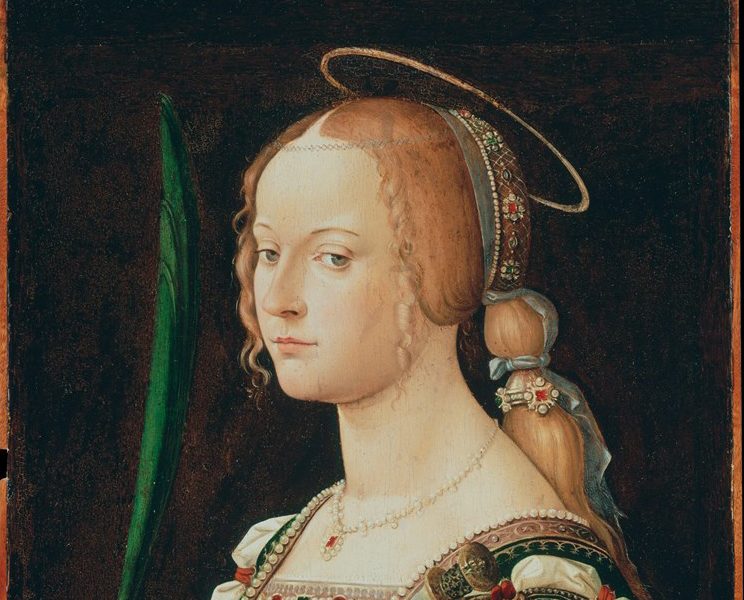
12 Sep Why were high foreheads once considered a sign of beauty?
This painting portrays Saint Justina of Padua as a Renaissance fashion plate. The pearls, rubies, and emeralds sewn onto her clothing, cap, and hair tie were the mark of an aristocratic lady; her embroidered stomacher (the triangular piece covering chest and stomach) was the height of fashion, as were her elegant green sleeves (as in the song!), separate from her bodice, with the blouse pulled through the gaps in a style called ‘slashing’. Most noticeable to a modern eye is her amazingly high forehead.

Another interesting side of this painting is that it may be a portrait of one of the great women of the Renaissance, Isabella D’Este, marchioness of Mantua. She is difficult to identify, because the existing portraits are inconsistent, but Saint Justina was a major saint in her family’s power base, and the dates are right.
If so, the portrait’s stylishness would make sense, as she was famous precisely for her elegance. For example, when the founder of the French Renaissance, François I, wanted to import the new styles from Italy, she made dolls for him dressed in the latest finery and sent them to him at Fontainebleau. So maybe this is an icon that represents a fashion icon?



